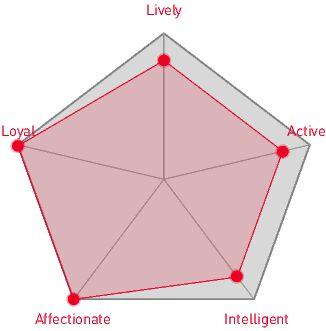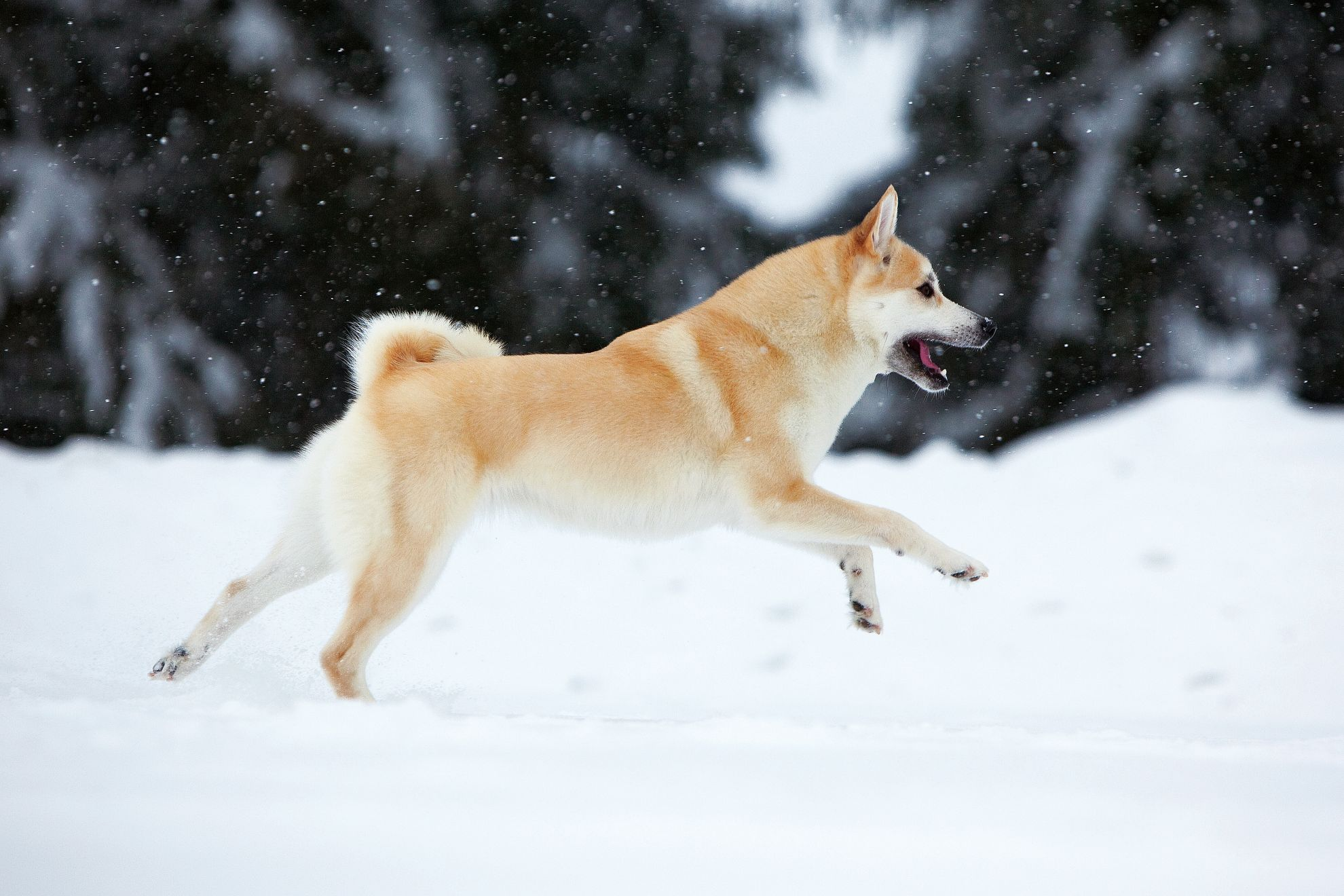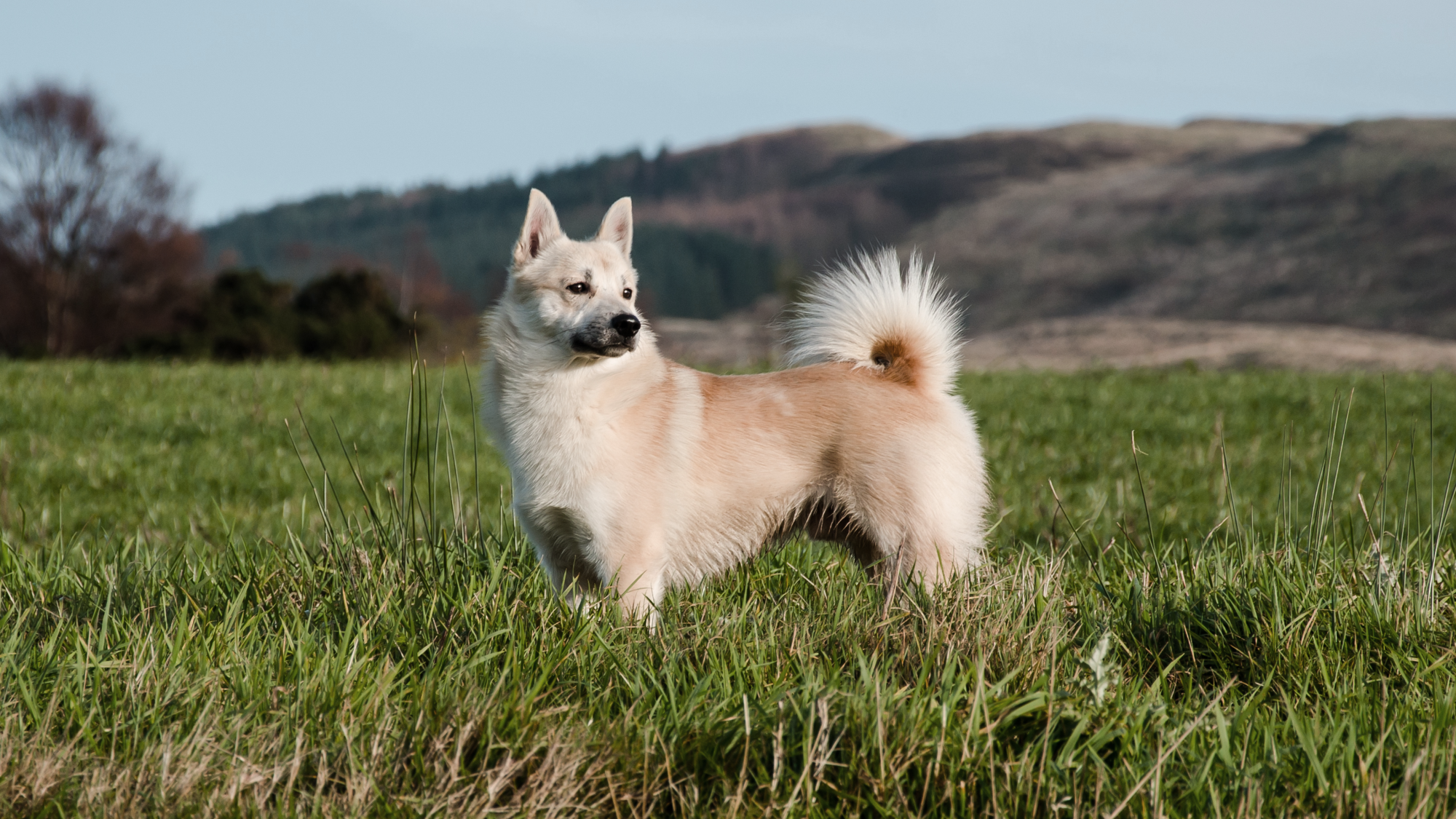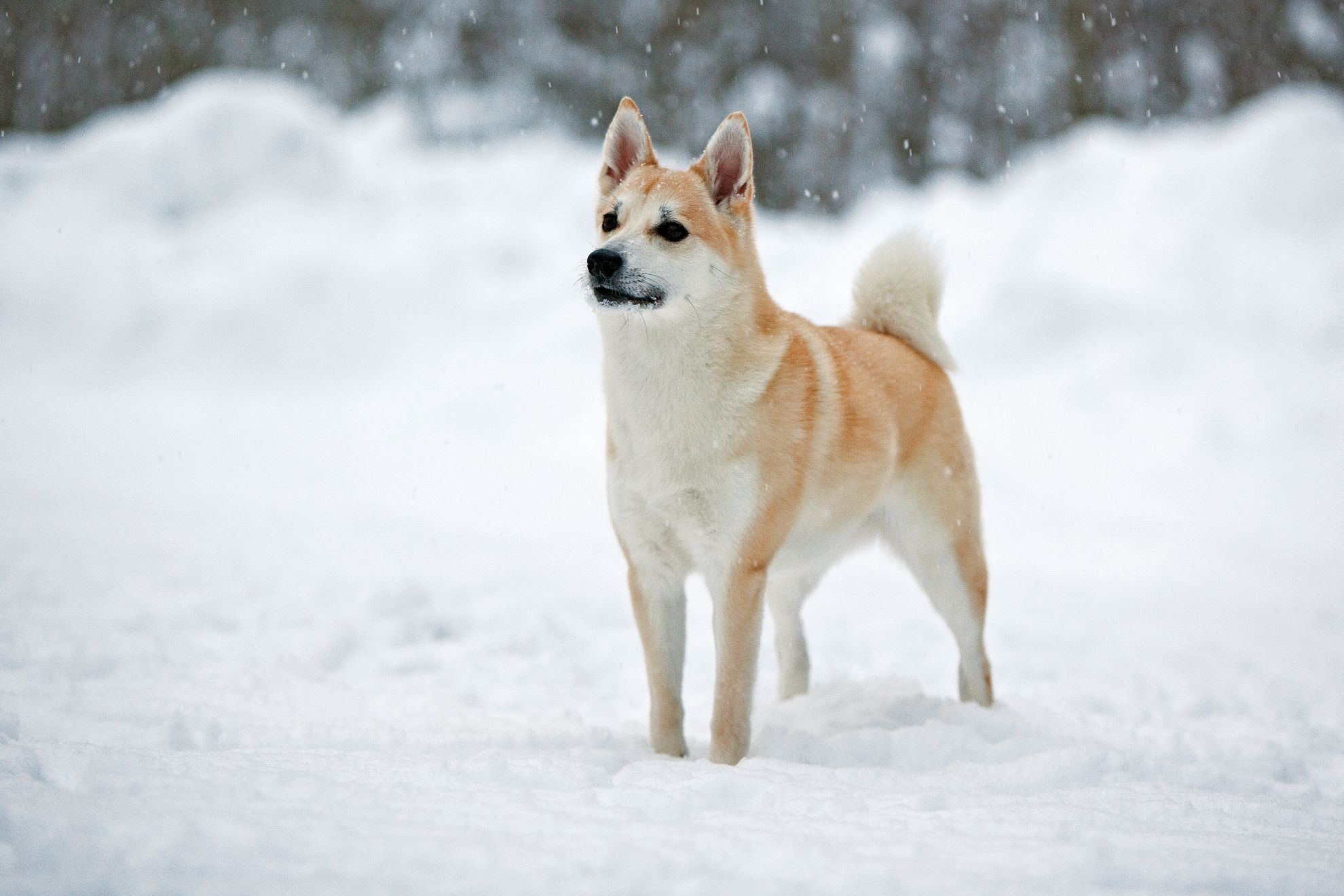
A healthy start to life
Puppyhood is a time of massive physical and behavioural change, and a steep learning curve for new owners. Find out how you can provide your puppy with the best start to life so they develop into strong, healthy dogs.
Learn more
Lifetime of health
Get advice and information on how to provide the best care for your dog at every stage of life.
Learn moreLet's talk Norwegian Buhunds
Hailing from the cold fjords of Norway, the name Norwegian Buhund, derives from the Norwegian word “Bu” which means a mountain hut or a homestead and “hund” meaning dog. With their thick, bushy, strikingly-beautiful ecru fur (though there are rare black Buhunds), they carry all the best qualities you would imagine in a mountain dog: Extremely loyal, lively, affectionate, and excellent handlers of cold weather. With their animated energy, you can rightly assume that the Norwegian Buhund would make a phenomenal hiking companion for nature enthusiasts, or playmate for children (in the snow, especially!), once trained, of course.Official name: Norwegian Buhund
Other names: Norsk Buhund
Origins: Norway

| Drooling tendencies |
|
Warm weather? | 
|
| Shedding level | Suited to apartment living? | 
|
|
| Energy level (high, low, medium)*: | Moderate | Family pet? |
 |
| Compatibility with other pets |  |
Can stay alone?* | 
|
*We advise against leaving pets alone for long stretches.
Companionship can prevent emotional distress and destructive behaviour. Speak to your veterinarian for recommendations.
Every pet is different, even within a breed; this snapshot of this breed’s specifics should be taken as an indication.
For a happy, healthy and well-behaved pet, we recommend educating and socialising your pet as well as covering their basic welfare, social and behavioural needs.
Pets should never be left unsupervised with a child.
Contact your breeder or veterinarian for further advice.


| Baby age: | Birth to 2 months |
| Puppy age: | 2 to 12 months |
| Adult age: | 1 to 7 years |
| Mature age: | 7 to 10 years |
| Senior age: | From 10 years |

1/7
Get to know the Norwegian Buhund
All you need to know about the breedIntelligent and high-energy Norwegian Buhunds are most commonly known for their “spitz”-like appearance with thick double coats, erect triangular ears, and full, curled tails—all features that protect them from frigid temperatures. While their predominant colouring falls under a range of tan hues, a black version of the Norwegian Buhund breed exists too. No matter the colour, this breed’s gregarious temperament makes them exceptional family dogs (although as with any dog, they shouldn’t be left unsupervised with children). Norwegian Buhunds can often be inclined to “sound the alarm” through loud and persistent barking if they sense anything from a distance, making them top-notch watch dogs. Although don’t act too surprised if your neighbours aren’t overjoyed about this.
Nowadays, While Norwegian Buhunds might come off as even-tempered, don’t mistake this for laziness– they require a fair amount of outside exercise. The breed was originally developed to be a skilled farm dog, herding sheep and cattle, so it is safe to assume that they are genetically gifted with excellent stamina and endurance. However, once they are able to output some of this pent-up energy, Norwegian Buhunds will be just as inclined to revert back to a calm and affectionate temperament, dotingly curled up next to you on the couch.

2/7
2 facts about Norwegian Buhunds
1. Rolling with the vikings
Norwegian Buhund dogs are considered an ancient breed that were likely ship companions when the Vikings departed from Denmark, Sweden, and Norway in the 9th century. Documentation of Norwegian Buhunds’ travels were discovered not only from archeological evidence, but also in other breeds native to areas where Vikings were thought to have once lived.
2. Shared traits with Welsh Corgis
Upon first glance, you might not immediately spot the similarities between Norwegian Buhunds and Welsh Corgis; however, they do in fact share many of the same traits. One ongoing theory is that the Corgi is a descendent of breeds that used to travel and live amongst Vikings. Similar to Norwegian Buhunds, Welsh Corgis used to make excellent herders. Despite their smaller size, Welsh Corgis also inherited the Norwegian Buhund breed’s guard dog tendencies and are very protective of both their owners and surroundings.
History of the breed
Although the exact history of Norwegian Buhunds was never officially documented, it is believed that this spitz-type breed has been living in Norway for over a thousand years. This assumption has been held after canine remains, thought to belong to the Norwegian Buhund family, were found in Viking graves from 900 AD. Extremely valuable treasures and possessions were also discovered in these graves, implying just how revered these dogs had once become in Viking culture.
The modern Norwegian Buhund breed as we know it today was originally developed in the western coastal region of Norway, where their purpose was to protect farms and herd livestock, ranging from sheep to reindeer. Norwegian Buhunds’ working abilities now extend beyond just herding: they are now commonly used as service dogs for police and guide dogs for the hearing impaired.
While still rare, an official breed club – the Norsk Buhundklubb – was created in 1939 and from there, Norwegian Buhunds started to gain more ground globally. In 1996, the Norwegian Buhund breed was officially recognised by the United Kennel Club (as a northern breed) and was thereafter recognised by the American Kennel Club in 2009 (as a herding breed).

4/7
From head to tail
Physical characteristics of Norwegian Buhunds
1. Ears
Small, wedge-shaped head, with triangular, pointed ears.
2. Body
Well-muscled, deep chest with strong and lean legs.
3. Tail
Short, tightly-curled thick tail.

5/7
Things to look out for
From specific breed traits to a general health overview, here are some interesting facts about your Norwegian Buhund

6/7
Caring for your Norwegian Buhund
Grooming, training and exercise tips
The Norwegian Buhund breed’s lush, thick coats do require a decent amount of grooming—at least several times a week. During shedding seasons, daily brushing sessions are a good idea. Vacuuming will also need to become a regular household chore. Aside from their coat, their nails should also be trimmed, ears checked and teeth brushed daily for optimal health. Given their herding background, it should come as no surprise that Norwegian Buhunds are active dogs that need plenty of exercise – long walks, play sessions, even a hike – everything goes. If they are deprived of this, a bored Norwegian Buhund can easily become noisy and mischievous in the house. When it comes to training, Norwegian Buhunds are highly intelligent dogs that live to please their owners, but they can also be strong-minded, so be sure to keep training fun and not too repetitive. This breed is known to be highly food-motivated, so food rewards and positive reinforcement will always yield the best results—just make sure they come out of your dog’s daily food rations to avoid unhealthy weight gain.7/7
All about Norwegian Buhunds
A big yes. While they are very friendly and trusting of their human family, Norwegian Buhunds are naturally wary of strangers and are not afraid to use their voice - think loud bark - to show it. In short, this characteristic makes them fit the role of pretty great watchdogs.
Yes, especially with other dogs. Norwegian Buhunds are used to working and living in packs given their long history as herding dogs. It can go either way with cats or other small pets, since their herding tendencies can often lead to some sort of chase.
translations.feature.breeds.otherbreeds
Read more on this topic

How your dog's nutrition needs change with age

How to adopt a dog

Things to consider before getting a dog
Sources
1 - Veterinary Centers of America https://vcahospitals.com/
2 - Royal Canin Dog Encyclopaedia. Ed 2010 and 2020
3 - Banfield Pet Hospital https://www.banfield.com/
4 - Royal Canin BHN Product Book
5 - American Kennel Club https://www.akc.org/



